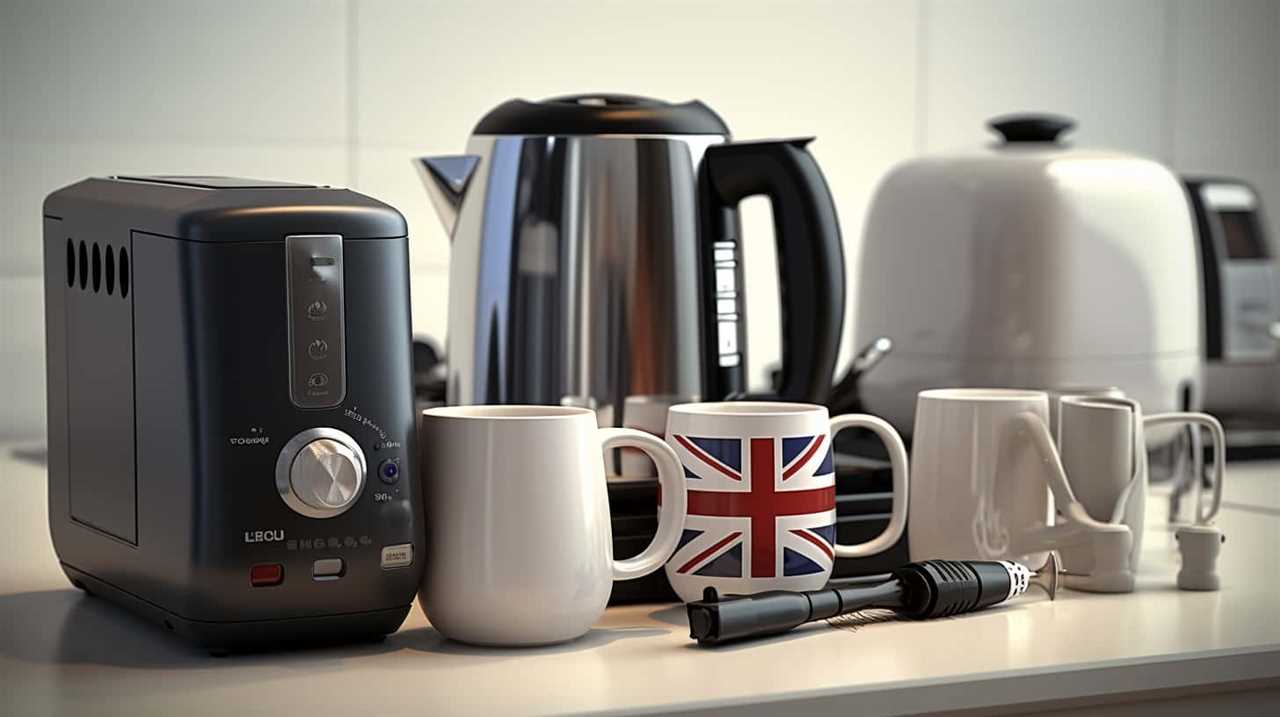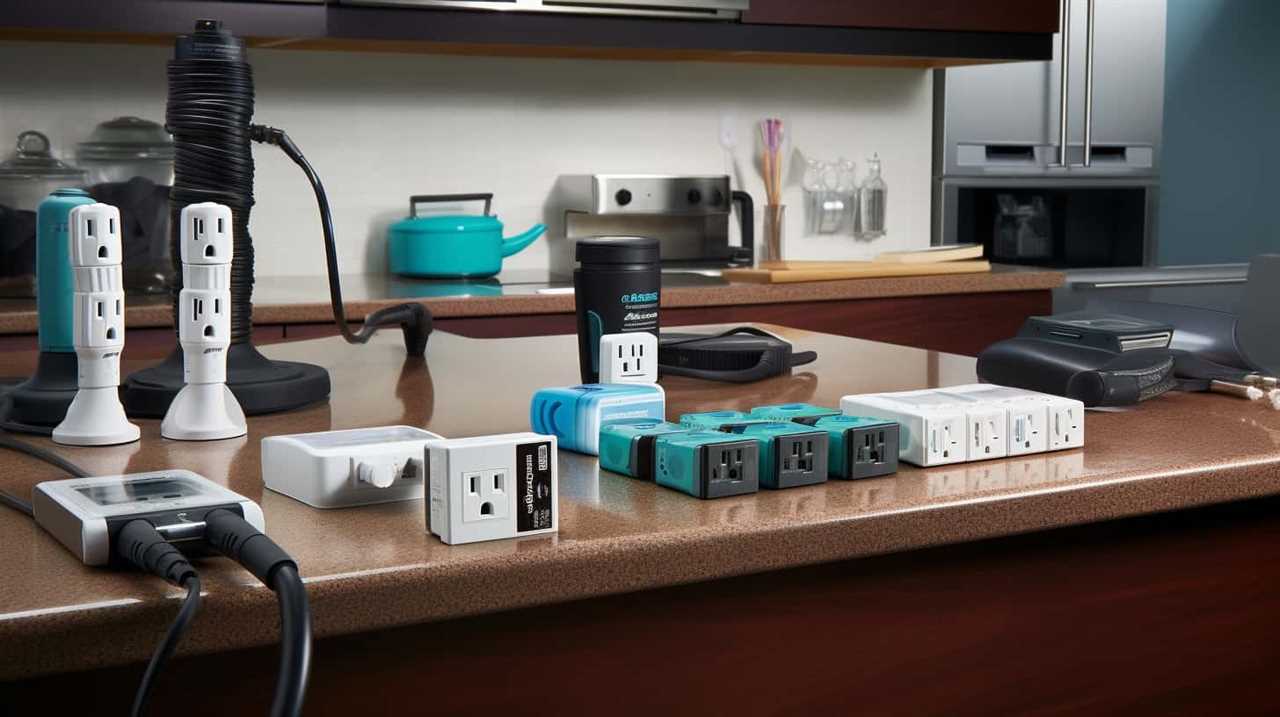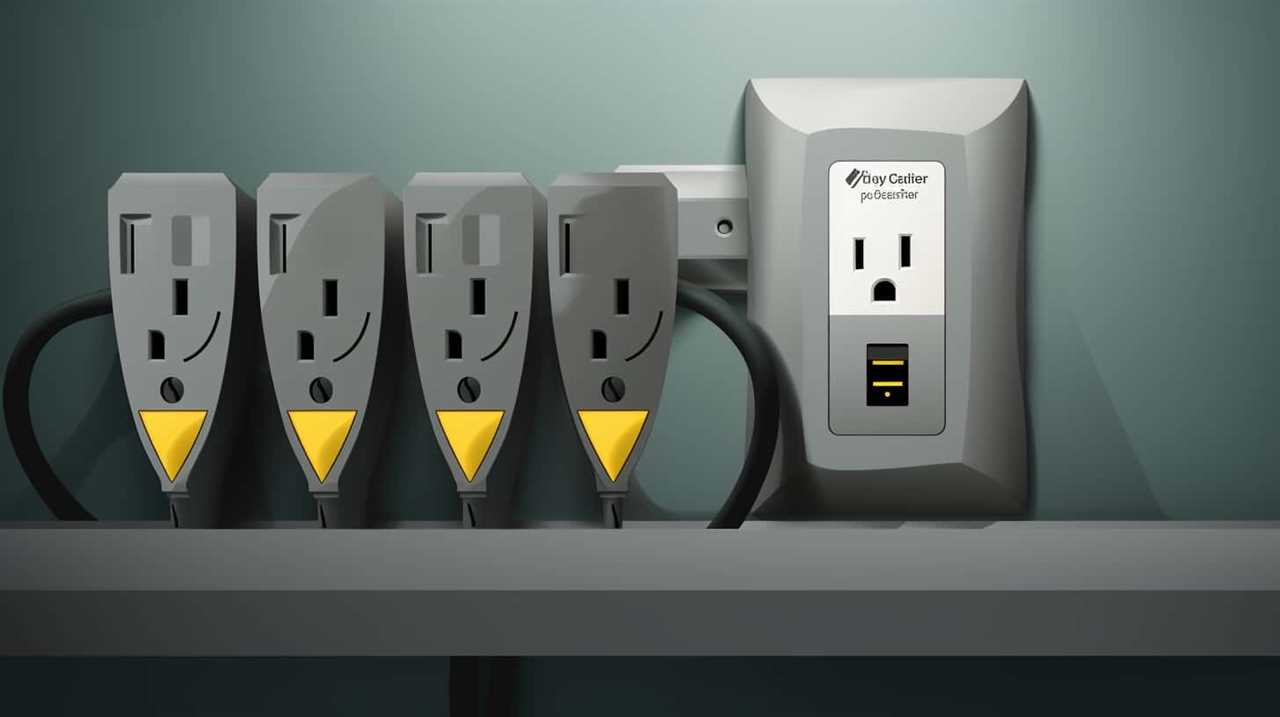Do you feel frustrated with an oven that isn’t heating up correctly? Don’t worry, we have some helpful tips for you. In this article, we will provide you with 7 effective solutions to tackle those pesky oven heating issues.
We’ve done our research and we’re here to investigate the truth of a theory – that by following these tips, you’ll be able to master the art of fixing oven heating issues. No more cold dinners or unevenly cooked meals!
So, let’s dive right in and discover the secrets to getting your oven back in top-notch heating condition. Trust us, you’ll be a pro in no time!
Key Takeaways
- Properly check the power supply by inspecting the outlet, power cord, circuit breaker, and voltage at the power outlet.
- Thoroughly inspect the heating element for any physical damage, continuity, and secure connections.
- Clean the oven regularly using a baking soda paste to remove grease and ensure efficient operation.
- Verify thermostat accuracy using an oven thermometer, calibrate if necessary, and seek professional assistance if needed.
Check the Power Supply
First, we need to check if the power supply is properly connected and functioning. Power supply troubleshooting is an essential step in diagnosing oven heating problems.

To begin, we must examine the electrical connections. Start by ensuring that the oven is properly plugged into a functioning power outlet. If it is, move on to inspecting the power cord for any signs of damage or fraying. Additionally, check if the circuit breaker or fuse related to the oven is functioning correctly. Resetting the circuit breaker or replacing a blown fuse may resolve the issue.
If the power supply appears to be intact, it’s advisable to use a multimeter to test the voltage at the power outlet. A reading within the expected range indicates a properly functioning power supply. However, if the voltage is outside the expected range, it may be necessary to consult a professional electrician to address the power supply issue.
Inspect the Heating Element
Now let’s take a closer look at the heating element of the oven.
We’ll check its functionality, looking for any signs of damage or malfunction.

If we find any issues, we’ll discuss the available options for replacement.
Element Functionality Check
Let’s begin by examining the functionality of the heating element through a thorough inspection. Here are three key areas to focus on during your assessment:
- Visual inspection: Look for any signs of physical damage, such as cracks or breaks in the heating element. These can cause it to malfunction and not generate enough heat.
- Electrical testing: Use a multimeter to check for continuity in the heating element. If there’s no continuity, it means the element has burned out and needs to be replaced.
- Terminal check: Ensure that the terminals connecting the heating element to the oven are securely fastened. Loose or corroded terminals can result in poor electrical connection and reduced heating efficiency.
Signs of Damage
To properly inspect the heating element for signs of damage, we should begin by conducting a thorough visual examination.
Common causes of damage to the heating element include corrosion, physical damage, and electrical issues.

During the visual inspection, we should look for any visible signs of corrosion, such as rust or discoloration. Physical damage may manifest as cracks, breaks, or bulges in the element. Additionally, we should check for loose connections or burnt wires that may indicate electrical issues.
If any of these signs are present, further troubleshooting steps may be required to identify the exact cause of the damage.
Once we’ve determined the extent of the damage, we can then consider the replacement options available to fix the oven heating problems.
Replacement Options Available
After conducting a thorough visual examination to inspect the heating element for signs of damage, we can now discuss the replacement options available. If the heating element is found to be faulty or damaged, it’s crucial to replace it to ensure proper oven functionality.

Here are three replacement options to consider:
- OEM Replacement: Opt for an original equipment manufacturer (OEM) replacement heating element. These are specifically designed for your oven model and guarantee compatibility and performance.
- Universal Replacement: Consider a universal replacement heating element that’s compatible with a wide range of oven models. These elements may require some modification during installation, but they offer versatility and convenience.
- Professional Replacement: If you lack the technical expertise or time to replace the heating element yourself, it’s recommended to hire a professional technician. They’ve the knowledge and experience to handle the replacement efficiently and ensure optimal performance.
Clean the Oven Interior
By thoroughly scrubbing the oven interior with a mixture of baking soda and water, we can effectively remove any built-up grease and food residue. This is one of the most important cleaning tips for maintaining a clean and efficient oven. DIY solutions like this not only save money but also ensure that our oven functions optimally.
To begin the cleaning process, we need to create a paste by mixing baking soda and water. The paste should have a thick consistency that is easy to apply. Once the paste is ready, we can use a sponge or a soft cloth to apply it evenly across the entire interior of the oven. We need to pay special attention to areas with stubborn grease or residue.
After applying the paste, we should let it sit for at least 15 minutes to allow the baking soda to work its magic. During this time, the mixture will break down the grease and loosen any burnt-on food particles. Once the time is up, we can use a damp cloth or sponge to wipe away the paste, along with the dissolved grease and residue.

To help visualize the effectiveness of this cleaning method, we have included a table below that compares the before and after results.
| Before | After |
|---|---|
| Greasy and dirty oven interior | Clean and spotless oven interior |
| Lingering food smells | Fresh and odor-free environment |
| Reduced heating efficiency | Improved heating performance |
Cleaning the oven interior with a baking soda and water mixture is a simple yet effective DIY solution. By following these cleaning tips, we can maintain a clean oven and ensure its optimal functioning.
Verify the Thermostat Accuracy
Now let’s move on to verifying the accuracy of our oven’s thermostat to ensure it’s functioning correctly. A properly calibrated thermostat is crucial for maintaining the desired temperature while cooking. Here are three steps to verify the accuracy of your oven’s thermostat:
- Check the temperature fluctuations: Place an oven thermometer in the center of the oven and set the temperature to a specific value, such as 350°F. Monitor the thermometer readings over a period of time to observe any significant temperature fluctuations. If the temperature varies by more than a few degrees, it may indicate a problem with the thermostat.
- Perform a thermostat calibration: If you notice temperature discrepancies, it may be necessary to calibrate the thermostat. Consult your oven’s user manual for specific instructions on how to calibrate the thermostat. This process usually involves adjusting the temperature offset to align it with the actual temperature measured by an oven thermometer.
- Test the oven at different temperature settings: To further verify the accuracy of the thermostat, test the oven at different temperature settings. Set the oven to various temperatures and monitor the thermometer reading. Compare the actual temperature to the set temperature to ensure they align closely.
By verifying the accuracy of your oven’s thermostat through calibration and temperature testing, you can ensure precise and consistent cooking results.

Now, let’s move on to the next step of testing the oven sensor.
Test the Oven Sensor
Continuing with our examination of oven heating problems, let’s now move on to testing the oven sensor.
The oven sensor plays a crucial role in maintaining the desired temperature inside the oven. If it malfunctions, it can lead to inconsistent heating or even complete failure of the oven to heat up.
To troubleshoot this issue, follow these troubleshooting tips.

First, locate the oven sensor, usually at the rear wall inside the oven. It’s a small, cylindrical device with two wires attached to it. Disconnect the wires and measure the resistance of the sensor using a multimeter. The resistance should be within the range specified by the manufacturer. If the reading is outside the recommended range, the sensor is likely defective and needs to be replaced.
Another method to test the oven sensor is by checking its voltage output. Connect the multimeter to the sensor’s wires and set it to the voltage setting. Start the oven and observe the voltage reading. It should increase steadily as the oven heats up. If the voltage remains constant or fluctuates abnormally, the sensor is faulty.
Once you have determined that the oven sensor is the cause of the heating problem, replace it with a new one. This should resolve the issue and restore proper heating functionality to your oven.
Now that we’ve examined the oven sensor, let’s move on to the next section where we’ll examine the oven igniter.

Examine the Oven Igniter
To examine the oven igniter, we’ll first check its functionality and condition. The igniter is a crucial component that provides the necessary heat to ignite the gas in your oven. If it isn’t working properly, it can lead to heating problems.
Here are some troubleshooting tips and common issues related to the oven igniter:
- Inspect for visible damage: Look for any cracks, breaks, or signs of wear and tear on the igniter. A damaged igniter may not be able to produce enough heat to ignite the gas.
- Test the electrical continuity: Use a multimeter to check if the igniter is receiving the proper electrical current. If there’s no continuity, it indicates a faulty igniter that needs to be replaced.
- Check for glowing or sparking: When you turn on the oven, the igniter should glow or spark. If it doesn’t, it may be defective and require replacement.
By examining the oven igniter, you can identify any issues that may be causing your oven heating problems.
However, if you’re unsure about how to proceed or if the problem persists even after troubleshooting, it’s recommended to call a professional technician who can provide expert assistance.

Call a Professional Technician
If the troubleshooting tips and examinations don’t resolve the oven heating problems, it’s advisable to call a professional technician.
Sometimes, the issue with the oven’s heating may be due to a thermostat malfunction. The thermostat is a crucial component that controls the temperature inside the oven. If it malfunctions, it can lead to inaccurate temperature readings and inconsistent heating.
When faced with a thermostat malfunction, it’s best to leave the repairs to a professional technician. They have the knowledge and expertise to accurately diagnose and fix the issue. They can determine whether the thermostat needs recalibration or replacement.
Calling a professional technician also ensures that the troubleshooting techniques are carried out correctly. While DIY repairs can be tempting, it’s important to remember that ovens are complex appliances with intricate systems. Without proper training and experience, attempting to fix the issue yourself may lead to further damage or even personal injury.

Frequently Asked Questions
How Can I Tell if the Power Supply Is the Issue With My Oven’s Heating Problem?
First, we need to check if the power supply is causing the oven’s heating problem.
To do this, we can perform a power supply check.
Start by ensuring that the oven is properly plugged in and that there are no issues with the outlet or circuit breaker.
If everything seems fine, you can use a multimeter to test the voltage at the power supply terminal.

If the voltage isn’t within the specified range, it may indicate a power supply problem.
What Are the Signs That Indicate a Faulty Oven Heating Element?
When your oven’s heating element is faulty, there are several signs that may indicate the problem. These include:
- Uneven cooking or baking
- Food taking longer to cook
- The oven not reaching the desired temperature
Common causes of a faulty heating element can be a:
- Broken coil
- Burned-out connection
To troubleshoot this issue, you can:

- Visually inspect the heating element for any visible damage
- Use a multimeter to test its continuity.
Are There Any Specific Cleaning Products or Methods Recommended for Cleaning the Oven Interior?
When it comes to cleaning the oven interior, there are several effective methods and cleaning products available.
One tip for maintaining oven cleanliness is to use a mixture of baking soda and water to create a paste, which can be applied to the interior surfaces.
Another method is to use a commercial oven cleaner, following the instructions provided.
Additionally, regular wiping and removal of food debris after each use can help keep the oven interior clean and functioning properly.

Is There a Way to Check the Accuracy of the Oven’s Thermostat Without Professional Assistance?
Sure, there’s a way to check the accuracy of the oven’s thermostat at home without professional assistance.
One method is to use an oven thermometer to compare the temperature inside the oven with the temperature set on the thermostat. If there’s a significant difference, it may indicate a problem with the thermostat.
Additionally, troubleshooting oven heating issues without professional help can involve checking the heating elements, ensuring proper ventilation, and cleaning any built-up debris.
How Can I Determine if the Oven Sensor Is Causing the Heating Problem?
To determine if the oven sensor is causing the heating problem, there are a few steps we can take.

First, make sure the sensor is clean and free of any debris.
Next, use a multimeter to test the sensor for continuity. If there’s no continuity, the sensor may need to be replaced.
Finally, if the sensor is functioning properly, the issue may be with the control board or another component.
Troubleshooting and replacing the oven sensor can greatly improve heating efficiency.

Can the Tips to Fix Oven Heating Problems also be Applied to Microwave Issues?
Yes, many solutions to microwave issues can also be applied to fixing oven heating problems. Both appliances rely on a heating element to cook food, so troubleshooting methods often overlap. Checking the power source, inspecting the heating element, and testing the temperature sensor are all common steps to diagnosing and resolving issues in both ovens and microwaves.
Conclusion
In conclusion, it’s important to address oven heating problems promptly to ensure efficient cooking.
Did you know that approximately 30% of oven heating issues are caused by faulty heating elements?
By regularly inspecting and cleaning the oven interior, testing the thermostat accuracy, and examining the oven igniter, you can prevent these problems and enjoy hassle-free cooking.
Remember, if you’re unsure or unable to fix the issue yourself, it’s always best to call a professional technician.











